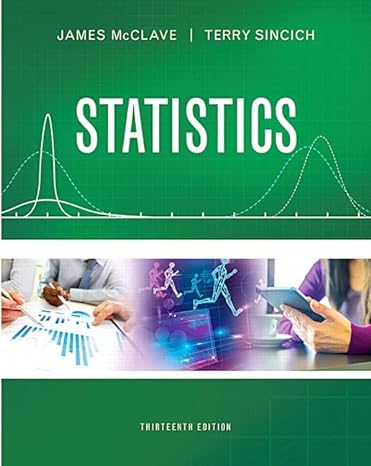Irrelevant speech effects. Refer to the Acoustical Science & Technology (Vol. 35, 2014) study of irrelevant speech
Question:
Irrelevant speech effects. Refer to the Acoustical Science & Technology (Vol. 35, 2014) study of irrelevant speech effects, Exercise 2.34
(pp. 77). Recall that subjects performed a memorization task under two conditions:
(1) with irrelevant background speech and (2) in silence. The difference in the error rates for the two conditions—called the relative difference in error rate
(RDER)—was computed for each subject. Descriptive statistics for the RDER values are reproduced in the following SAS printout. Suppose you want to estimate the average difference in error rates for all subjects who perform the memorization tasks.
a. Define the target parameter in words and in symbols.
b. In Exercise 2.104b (p. 105), you computed the interval x { 2s. Explain why this formula should not be used as an interval estimate for the target parameter.
c. Form a 98% confidence interval for the target parameter.
Interpret the result.
d. Explain what the phrase “98% confident” implies in your answer to part c.
e. Refer to the histogram of the sample RDER values shown in Exercise 2.34 and note that the distribution is not symmetric. Consequently, it is likely that the population of RDER values is not normally distributed.
Does this compromise the validity of the interval estimate, part c? Explain.
Step by Step Answer:

Statistics Plus New Mylab Statistics With Pearson Etext Access Card Package
ISBN: 978-0134090436
13th Edition
Authors: James Mcclave ,Terry Sincich





